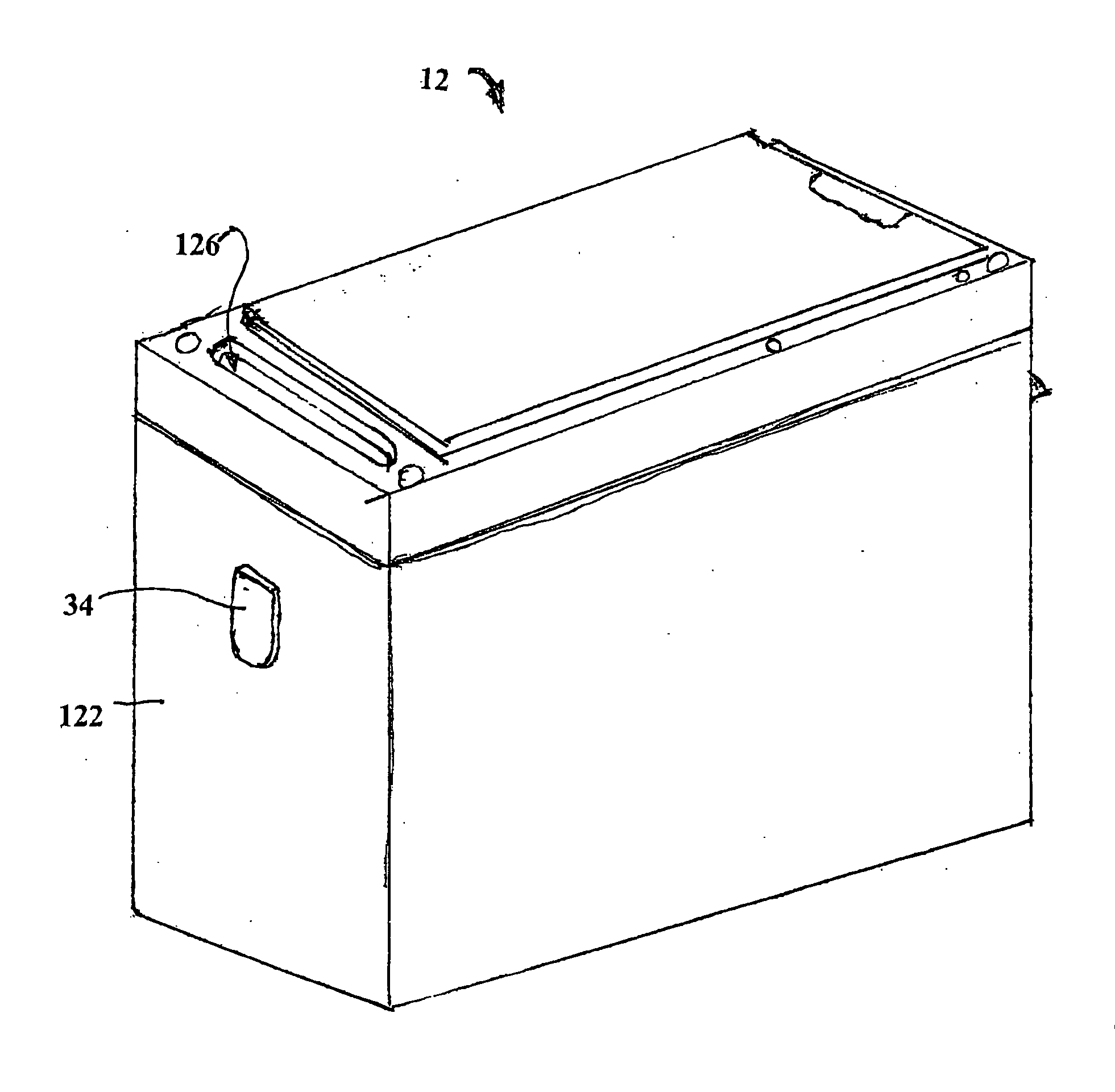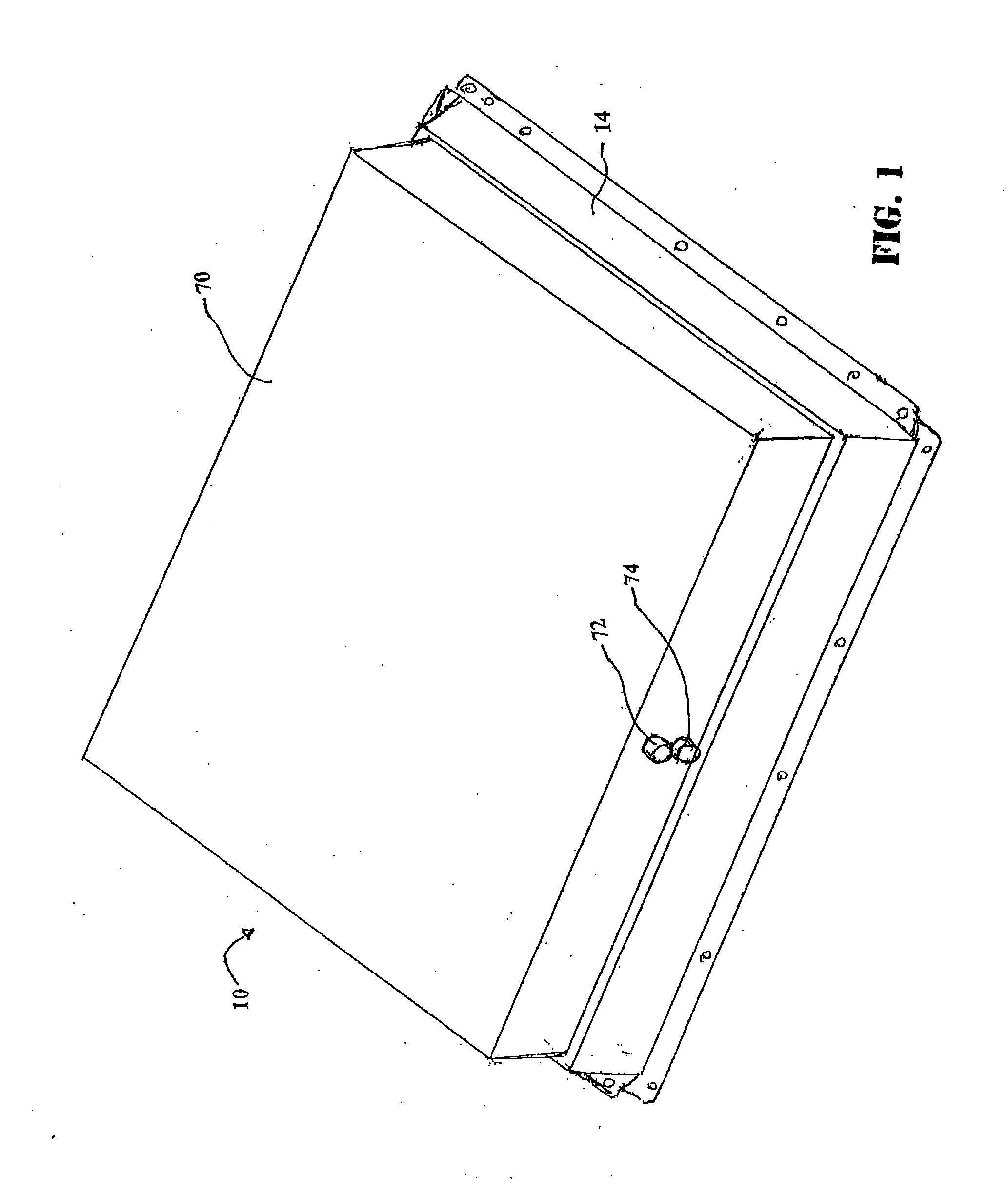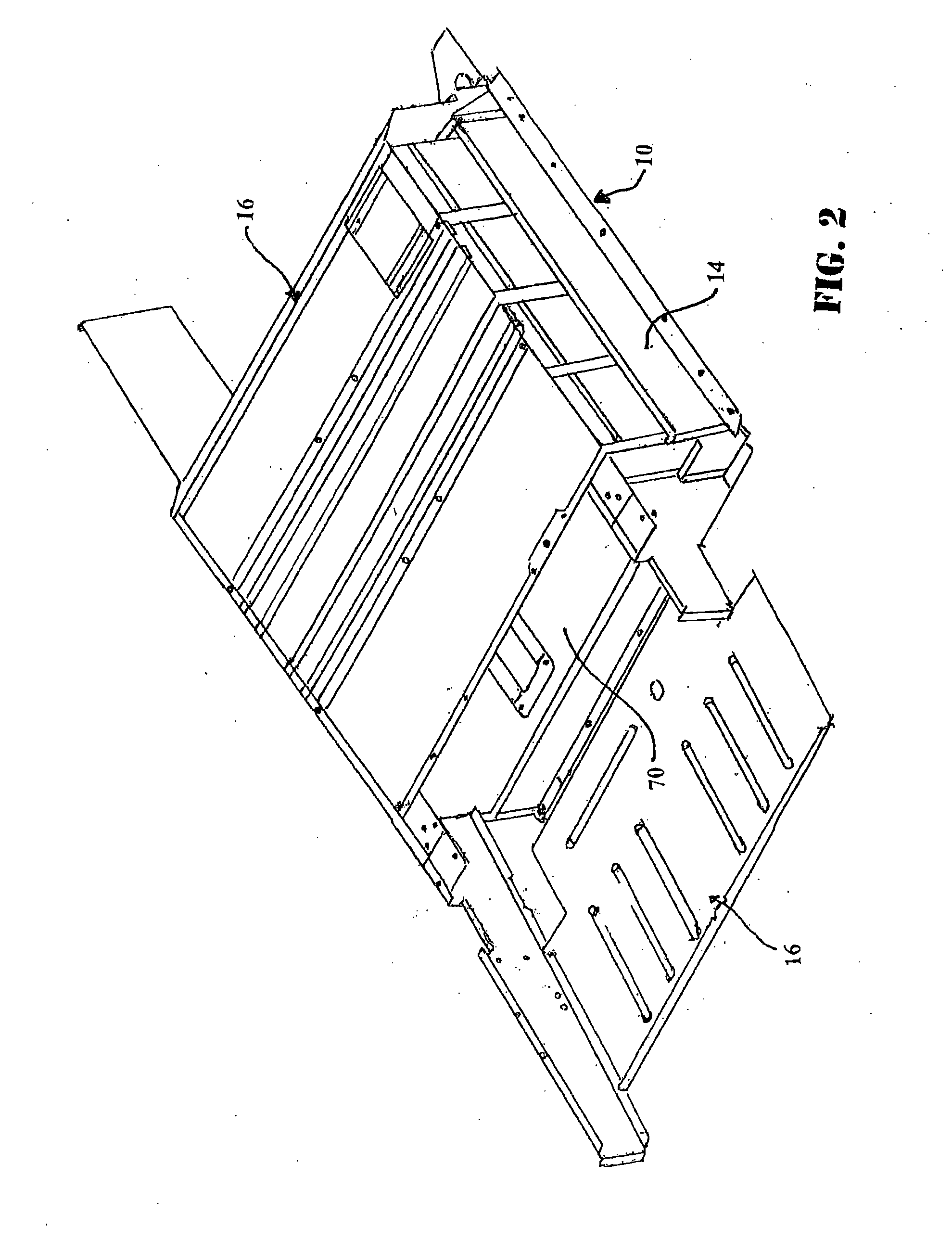Battery assembly
- Summary
- Abstract
- Description
- Claims
- Application Information
AI Technical Summary
Benefits of technology
Problems solved by technology
Method used
Image
Examples
Embodiment Construction
[0058]Referring to the Figures, wherein like numerals indicate like or corresponding parts, a battery assembly or battery pack of the present disclosure is adaptable to be utilized in various configurations including and not limited to a horizontally or vertically stacked battery cell packaging configuration used in an automotive vehicle applications. The battery assembly or pack or battery pack assembly is generally shown at 10 in FIG. 1. The battery assembly 10 includes a plurality of battery sub-packs, each generally shown at 12 in FIG. 1.
[0059]As best shown with reference to FIGS. 11-22, each battery module 13 of each sub-pack 12 includes a plurality of cells 91. Preferably, each cell 91 is a lithium ion cell without limiting the scope of the present disclosure. Those skilled in the battery art will appreciate that other cells can be utilized within the scope of the present disclosure. Each cell 91 includes a plurality of battery components (not shown) co-acting between one anot...
PUM
 Login to View More
Login to View More Abstract
Description
Claims
Application Information
 Login to View More
Login to View More - R&D
- Intellectual Property
- Life Sciences
- Materials
- Tech Scout
- Unparalleled Data Quality
- Higher Quality Content
- 60% Fewer Hallucinations
Browse by: Latest US Patents, China's latest patents, Technical Efficacy Thesaurus, Application Domain, Technology Topic, Popular Technical Reports.
© 2025 PatSnap. All rights reserved.Legal|Privacy policy|Modern Slavery Act Transparency Statement|Sitemap|About US| Contact US: help@patsnap.com



